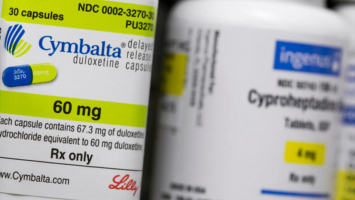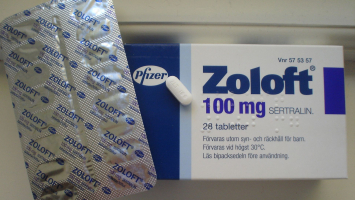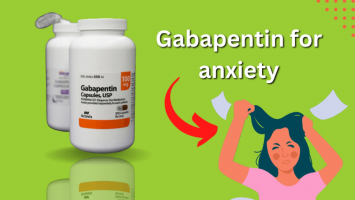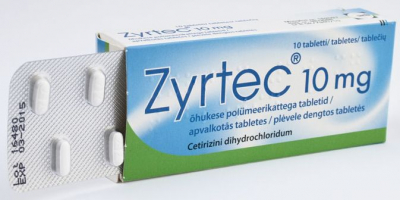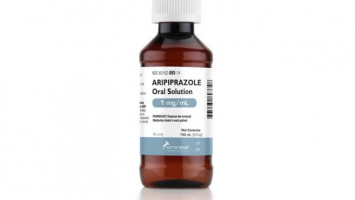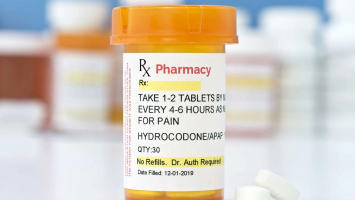Top 6 Things to Know About Xanax
Xanax is not an opioid; it is a benzodiazepine; yet, it contributes to the opioid epidemic since it is frequently taken with opioids, resulting in overdoses. ... read more...Xanax is the most widely prescribed psychoactive drug in the United States, as well as the second-most regularly prescribed medicine resulting in ER visits for drug misuse. While Xanax is a beneficial prescription medicine for many mental health issues, it has a significant abuse potential, and many Xanax prescriptions are abused. Here is the important information that you should know about Xanax.
-
Alprazolam is a brand name (trade name). Alprazolam may be used to treat anxiety and other mood disorders. It may also be used for its sedative and relaxing qualities.
The specific mechanism by which Xanax works to calm mood is unknown, although scientists believe it may increase the action of GABA (gamma-aminobutyric acid), an inhibitory neurotransmitter, in the brain. This results in hypnosis (a trancelike state).
Xanax is a benzodiazepine, which is a type of medication.

yourfirststep.org 
Verywell Mind -
May be used to assist control the symptoms of generalized anxiety disorder or to provide short-term respite from anxiety symptoms. Anxiety symptoms related with depression may be alleviated.
Can be used to treat panic disorder with or without agoraphobia (agoraphobia is a fear of places or situations that might cause panic, helplessness, or embarrassment).
There are two types of Xanax tablets: immediate-release and extended-release. There are four strengths available: 0.25mg, 0.5mg, 1mg, and 2mg. Alprazolam, a generic version of Xanax, is also available.

greenxanax.com 
WLKY -
If you are between the ages of 18 and 60, do not take any other medications, and have no other medical issues, you are more likely to have the following negative effects:
- Standing causes drowsiness and unsteadiness, increasing the chance of falling.
- May impede response time and make it difficult to drive or operate machines. Stay away from alcohol.
- Common adverse effects include blood pressure reduction, heart palpitations, diarrhea, nausea, dry mouth, headache, and a decrease in libido.
- Xanax has the potential to be addictive, causing emotional or physical reliance that can lead to overdose or death. Assess a person's risk of abuse, overuse, and addiction before administering Xanax.
- Withdrawal symptoms (such as convulsions, tremors, cramping, vomiting, sweating, or sleeplessness) may occur if you stop abruptly; taper down gradually over many months under the guidance of a doctor.
- Smokers may react less strongly to Xanax. Those with liver illness may need to modify their Xanax dosage.
Although Xanax has been used off-label (not an FDA-approved usage but nevertheless a widespread use) to assist sleep in the past, it should not be pushed for this reason unless no other option is available. Benzodiazepines, such as Xanax, shorten the duration of deep or slow-wave sleep (which corresponds with how refreshed you feel in the morning) and are linked to addiction, dependency, and tolerance (where progressively larger dosages of the same drug are needed to obtain the same effect). When used for sleep, abrupt withdrawal of Xanax has been linked to rebound insomnia, which may be worse than the original sleeping problem.
Combining Xanax with other benzodiazepines (such as diazepam) or opioids (such as oxycodone or hydrocodone) is not recommended. Severe drowsiness, respiratory depression (abnormally slow and shallow breathing), coma, and death are all possible outcomes. Several other medicines, including those that increase or inhibit CYP 3A hepatic enzymes, may also interact. Do not use if you are taking a CYP3A inhibitor such ketoconazole or itraconazole. There have been stories of people dying after using Xanax for severe lung illness.
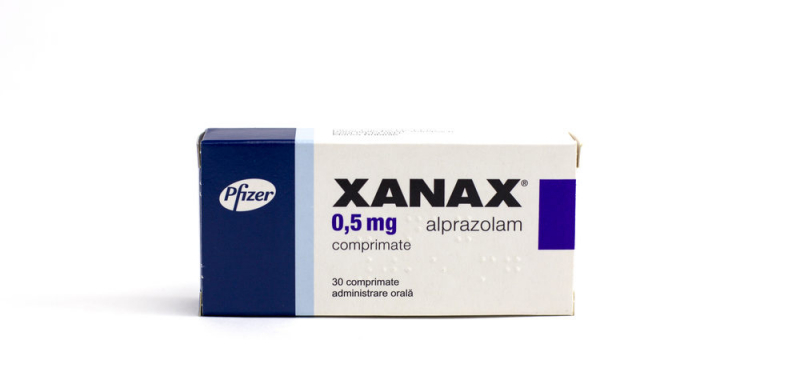
crehab.org https://www.youtube.com/watch?v=azwHy_zm08I -
You can take Xanax with or without meals. While using Xanax, avoid operating equipment, driving, or other jobs that require mental attention. While taking this medication, avoid drinking alcohol. The smallest effective dose of Xanax should be administered for the shortest amount of time. Extended-release pills should be taken first thing in the morning and consumed whole, without being crushed or chewed. If long-term Xanax is abruptly stopped, withdrawal symptoms (blurred vision, sleeplessness, sweating, and, in rare cases, seizures) may develop; cease carefully on a doctor's recommendation.
If you have acute narrow-angle glaucoma, do not use it.Do not combine Xanax with itraconazole (Sporanox) or ketoconazole (Nizoral), or with any other drugs, unless your doctor has confirmed that they are compatible with Xanax. Keep children and pets out of reach. Do not start or stop using Xanax during pregnancy without first consulting with your doctor. Use only on the advice of a doctor during pregnancy, and mothers should not nurse their babies while using Xanax. Before using additional drugs with Xanax, consult your doctor or pharmacist to ensure that they are compatible.
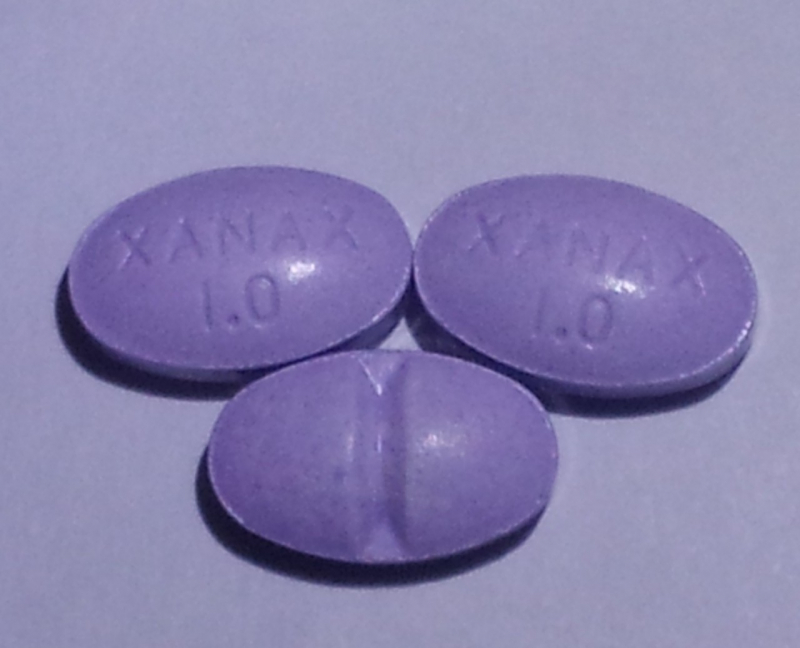
yourfirststep.org https://www.youtube.com/watch?v=Kq6oNcd3d-U -
Peak Xanax concentrations occur 1-2 hours after immediate-release tablet treatment and up to 12 hours after extended-release tablet administration.
The duration of Xanax's action varies depending on the individual and formulation (anywhere from 6 to 27 hours).
https://www.youtube.com/watch?v=Wkby2uq175Y https://www.youtube.com/watch?v=6OppVf9Ty-E -
Medicines that interact with Xanax may reduce its impact, shorten its duration of action, cause adverse effects, or have no effect when combined. An interaction between two drugs may not necessarily necessitate the discontinuation of one of them; nonetheless, it can. Consult your doctor about how to handle medication interactions.
Xanax may interact with the following medications:
- anti-anxiety medications, including other benzodiazepines, such as lorazepam and oxazepam
- anticonvulsants such as valproate
- antidepressants, such as amitriptyline, imipramine, nortriptyline
- antifungals such as voriconazole
- antihistamines that cause sedation, such as diphenhydramine
- barbiturates
- duloxetine
- HIV medications such as ritonavir (reduce the dosage of Xanax to half of that recommended, then increase to the target dosage after 10 to 14 days)
- monoamine oxidase inhibitors, such as selegiline, isocarboxazid, or phenelzine
- opioid analgesics such as alfentanil, codeine, oxycodone and morphine
- oral contraceptives
- muscle relaxants such as baclofen and cyclobenzaprine
- probenecid
- scopolamine
- sleeping pills, such as zolpidem
- some medications used to treat mental illness, such as clozapine and thioridazine
- strong CYP3A inhibitors, such as ketoconazole and itraconazole (do not use together)
- Other CYP3A inhibitors, such as ritonavir, nefazodone, fluvoxamine, or cimetidine (consider dosage reduction of Xanax)
- theophylline
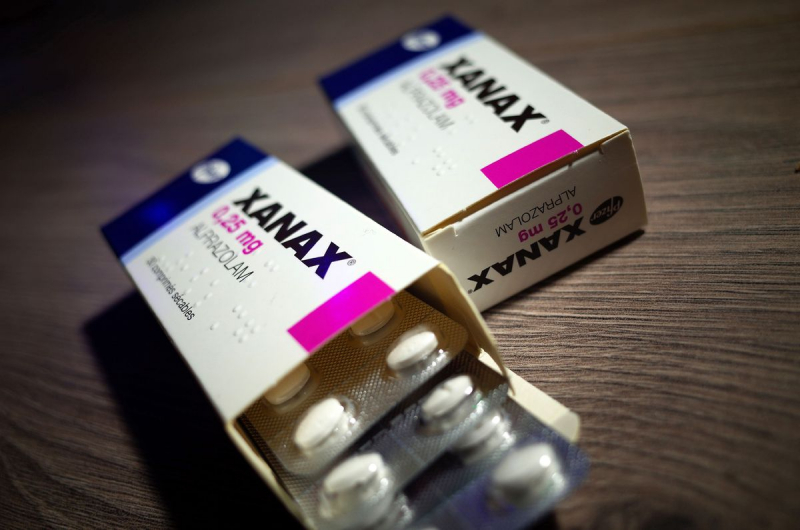
New York Daily News https://www.youtube.com/watch?v=yOSJyqqJRIQ - anti-anxiety medications, including other benzodiazepines, such as lorazepam and oxazepam











